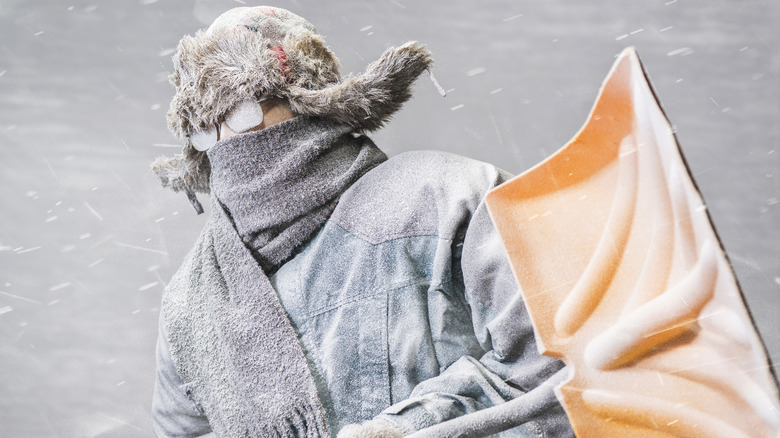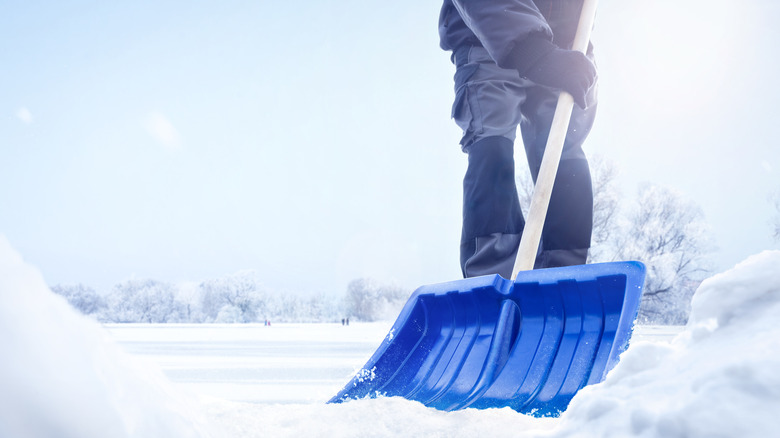Does WD-40 Prevent Snow From Sticking To Your Shovel Or Car?
There are, perhaps, few tasks homeowners enjoy less than shoveling snow in the wake of a big winter storm. But when a thick blanket of the white stuff covers your driveway and sidewalks, there are few options available, save for grabbing a shovel and getting to work. One must be careful when shoveling snow, of course, as the back-breaking work can not only be tough on the old dorsal, but also the heart.
Given the potential dangers that come with the work, it is always a good idea to work smarter instead of working harder. To that end, there are a few things you can do to help make your next snow-shoveling venture a little easier to manage. WD-40 can help out in that effort, as it should prevent snow from sticking to your shovel. For those who don't know, the WD in that product's name actually stands for Water Displacement, meaning it's not only good as a lubricant for stuck and squeaking doors, but also for limiting the effects of H2O on metals and other hard surfaces.
That being the case, it shouldn't take much effort to discern how WD-40 can keep snow from sticking to the head of your shovel when you're working away in the cold and wet. According to the brand itself, you can engage the snow-assuaging benefits of WD-40 simply by spraying the head of your shovel with the lubricant before you get to shoveling.
More tips for shoveling snow this winter
Preventing snow from sticking to your shovel in the winter time is, of course, just one of many uses folks have found for WD-40 over the years. Even still, we'd wager that many will be rushing to add the multi-use lubricant to their snow-shoveling arsenal, as any measure that can help ease the burden of the daunting task should be a welcome one. By the way, WD-40 is not the only lubricant than can do the job of unsticking snow from your shovel, as cooking oil, wax, and some silicone-based liquids may also do the trick.
There are, of course, a handful of other measures you can take to help ensure your snow-shoveling routine goes as smoothly as possible. First and foremost, that includes the use of salt or ice melt on hard surfaces like driveways and sidewalks before a single flake falls, as this may help limit accumulation and make shoveling easier after the snow has fallen. You should also try to get out and shovel before the snow gets too deep, with some suggesting it's wise to get to work with every 2 to 4 inches of accumulation. Doing so may also help prevent the snow from becoming compacted and harder to shovel.
Apart from selecting the correct style of shovel for the job — potentially even a fancy electric model — it is also recommended that you dress in removable layers when you head out to work. Likewise, you should do a little limbering up a bit before attack the snow, as it may help prevent injury to your arms, legs, and back.

